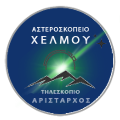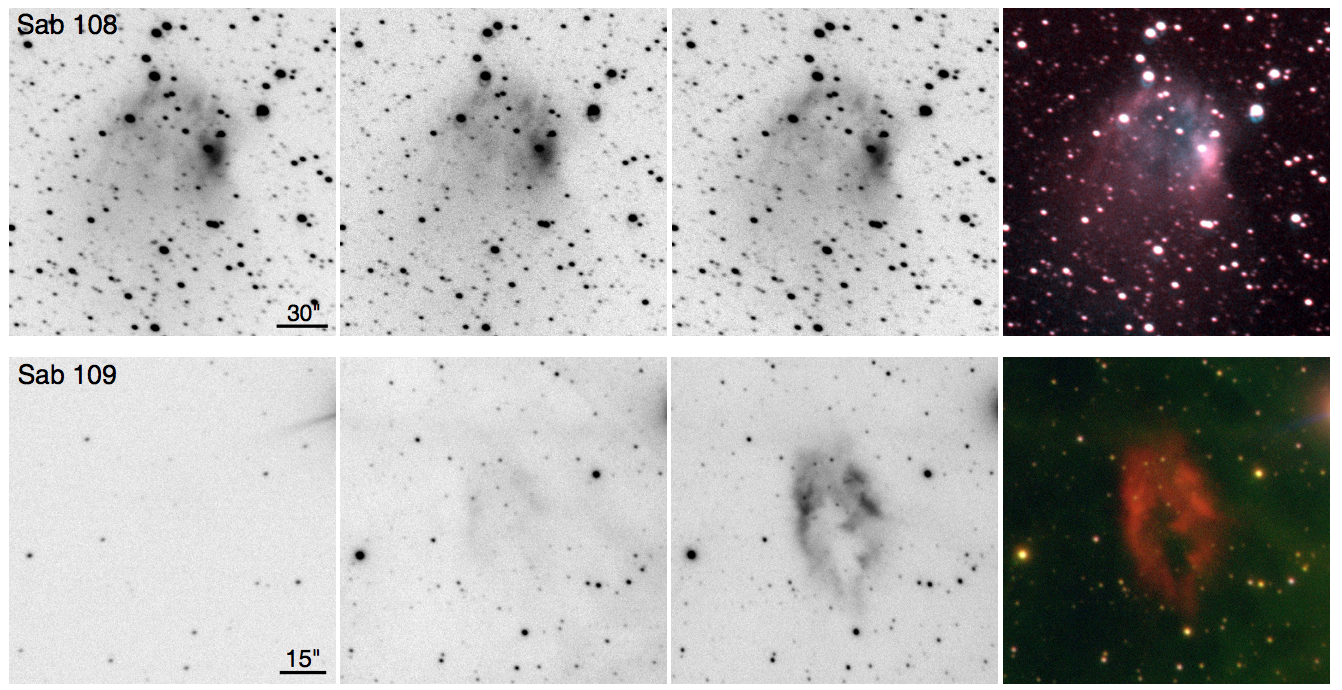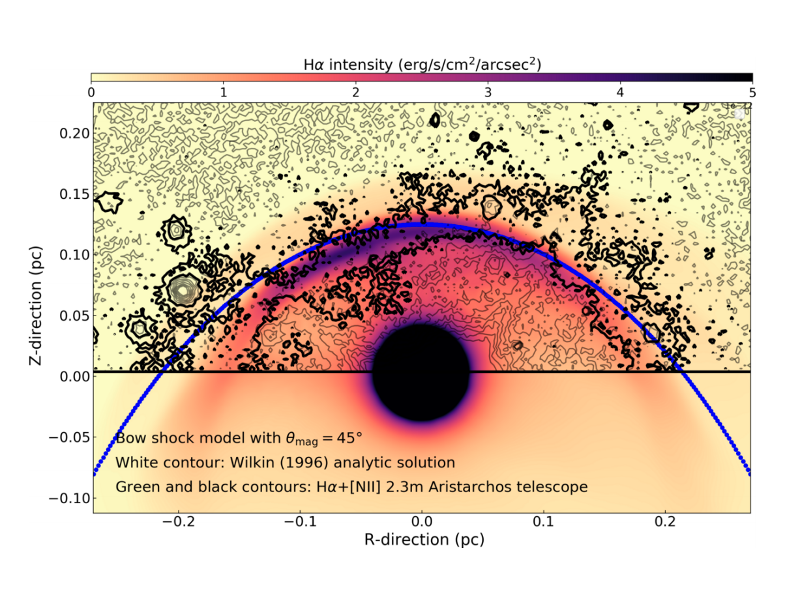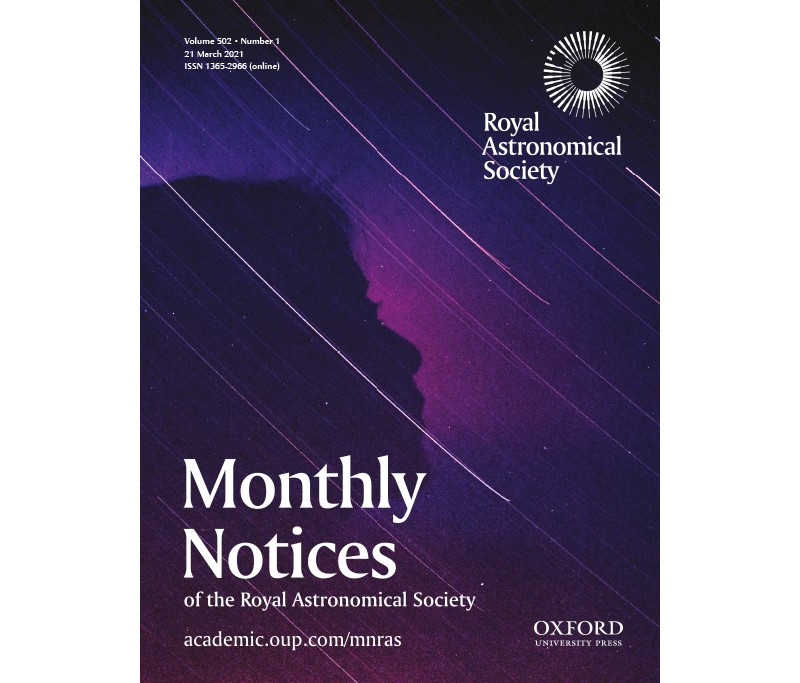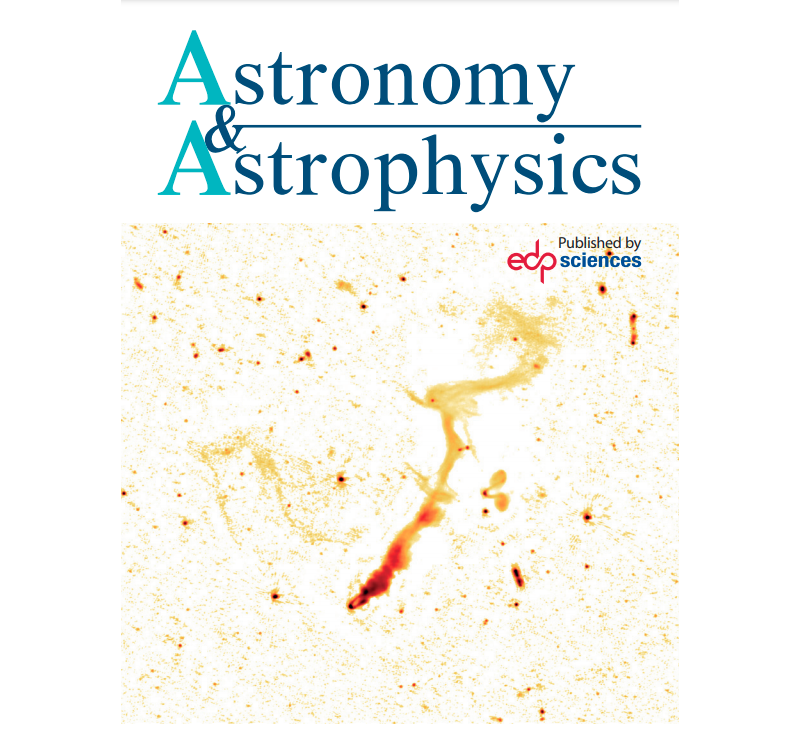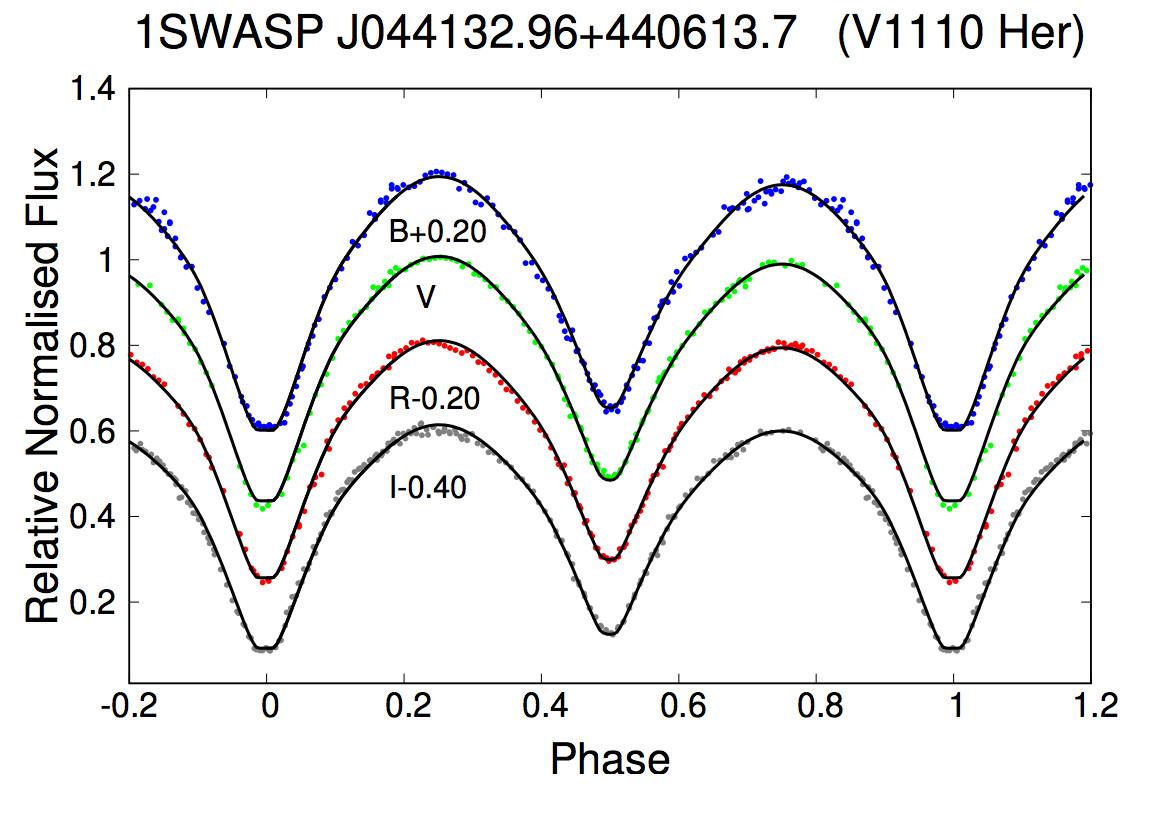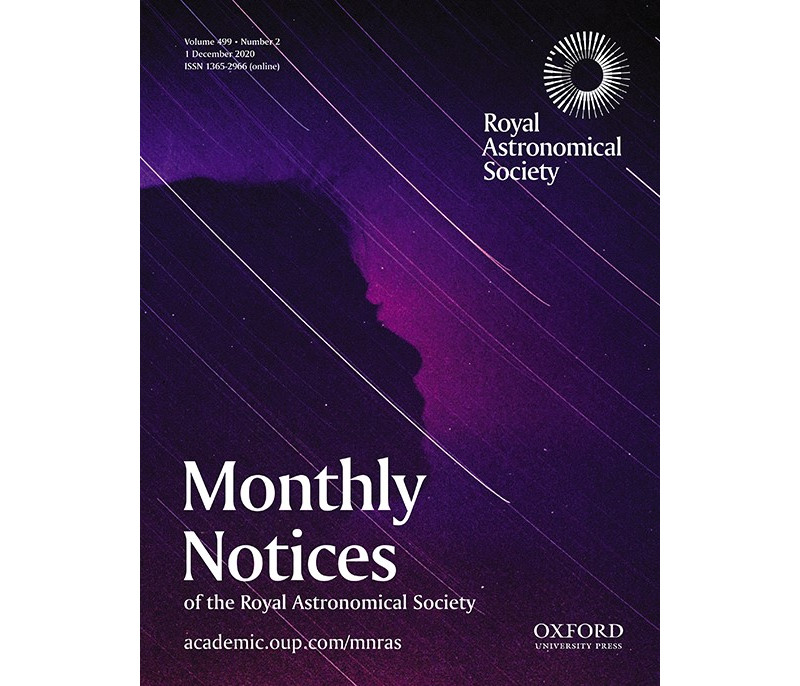First deep images catalogue of extended IPHAS PNe
A significative fraction of all massive stars in the Milky Way move supersonically through their local interstellar medium (ISM), producing bow shock nebulae by wind-ISM interaction. The stability of these observed astrospheres around cool massive stars challenges precedent two-dimensional (magneto-)hydrodynamical simulations of their surroundings. We present three-dimensional magneto-hydrodynamical (3D MHD) simulations of the circumstellar medium of runaway M-type red supergiant stars moving with velocity v* = 50 km s−1 . We treat the stellar wind with ...
